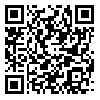Volume 18, Issue 19 (7-2020)
RSMT 2020, 18(19): 1-10 |
Back to browse issues page
Download citation:
BibTeX | RIS | EndNote | Medlars | ProCite | Reference Manager | RefWorks
Send citation to:



BibTeX | RIS | EndNote | Medlars | ProCite | Reference Manager | RefWorks
Send citation to:
Noori M, Sadeghi H. Designing volleyball talent identification software based on fuzzy logic. RSMT 2020; 18 (19) :1-10
URL: http://jsmt.khu.ac.ir/article-1-428-en.html
URL: http://jsmt.khu.ac.ir/article-1-428-en.html
Kharazmi university , mh.noori835@gmail.com
Abstract: (6625 Views)
Using appropriate devices and scientific methods by coaches and trainers can accelerate the process of sport talent identification and development, and could also provide condition in which capable athletes to be directed in to suitable sport according to their abilities and skills. Former researches in scope of sport talent identification usually have been done in order to determine or normalize effective parameters. The purpose of this study was to design volleyball talent identification algorithm based on fuzzy logic which ranks the volleyball athletes. Due to expert opinion, essential parameters of volleyball talent identification which also used in this software are; Height (Anthropometry), Velocity (Ability of motion), Vertical jump with run-up (technical skill) and Pair jump (functional skill). Norms of young elite volleyball players are also used as index. Then with considering parameters and index, a fuzzy algorithm is designed which classifies volleyball players in Unmatched, Semi-matched, Matched, Brilliant and Rare class. These results can help trainers and coaches in order to select talented and capable volleyball players.
Type of Study: Research |
Received: 2020/07/17 | Accepted: 2020/07/15 | Published: 2020/07/15
Received: 2020/07/17 | Accepted: 2020/07/15 | Published: 2020/07/15
References
1. Green, M., Houlihan, B. (2005). Elite sport development: policy learning and political priorities. Routledge press Publishing, London and New York. 22-5. [DOI:10.4324/9780203022245]
2. Anshel, M.H., Lidor, R. (2012). Talent detection programs in sport: the questionable use of psychological measures. Journal of Sport Behavior. 35(3):239-66.
3. Zheng, J., Chen, S. (2016). Exploring China's success at the Olympic Games: a competitive advantage approach. Journal of European Sport Management Quarterly. 16(2):148-71. [DOI:10.1080/16184742.2016.1140797]
4. Vaeyens, R., Lenoir, M. (2008). Talent identification and development programmers in sport: Current models and future. Journal of Sport Medicine. 38(9):703-14. [DOI:10.2165/00007256-200838090-00001]
5. Barreiros, A., Côté, J., Fonseca, A.M. (2014). From early to adult sport success: Analyzing athletes' progression in national squads. European Journal of Sport Science. 14(1):178-82. [DOI:10.1080/17461391.2012.671368]
6. Sadeghi, H., Basatnia, R. (2010). Anthropometric and kinematic properties of Hossein Rezazadeh, Iranian world and Olympic champion in snatch weightlifting. Journal of Sport Medicine Studies. 26, 302-309. [Persian]
7. Breitbach, S., Tug, S., Simon, P. (2014). Conventional and genetic talent identification in sports: Will recent developments trace talent? Journal of Sports Medicine. 44(11):1489-503. [DOI:10.1007/s40279-014-0221-7]
8. Abbott, A., Collins, D. (2004). Eliminating the dichotomy between theory and practice in talent identification and development: considering the role of psychology. Journal of Sports Sciences. 22(5):395-408. [DOI:10.1080/02640410410001675324]
9. Zary, J.C., Reis, V.M., Rouboa, A. (2010). The somatotype and dermatoglyphic profiles of adult, junior and juvenile male Brazilian top-level volleyball players. Journal of Science and Sports. 25(3):146-52. [DOI:10.1016/j.scispo.2009.09.002]
10. Wang, L. (2003). Adaptive fuzzy system and control: Design and stability analysis, Prentice Hall Publishing. 3rd Ed.
11. Hong, L. (2001). Fuzzy neural intelligent system: Mathematical foundation and application in engineering. CRC Press Publishing. p.125-6.
12. Noori, M.H., Sadeghi, H. (2013). Designing basketball talent identification software based on fuzzy logic. Journal of Sport Medicine Studies. 13(5):27-38. [Persian]
13. Ebrahim, Kh. (2002). The study of current situation and determining talent identification criteria in volleyball. Research Project, Sport Sciences Research Institute. [Persian]
14. Brown, J. (2003). Sport talent identification. Human Kinetics Publishing, 2nd Edition, 33-43.
15. Papic, V., Rogulj, N. (2009). Identification of sport talents using a web-oriented expert system with a fuzzy module. Expert Systems with Applications. 36(5):8830-8. [DOI:10.1016/j.eswa.2008.11.031]
16. Gall, F., Carling, C., Williams, M., Reilly, T. (2010). Anthropometric and fitness characteristics of international, professional and amateur male graduate soccer players from an elite youth academy. Journal of Science and Medicine in Sport. 13(1):90-5. [DOI:10.1016/j.jsams.2008.07.004]
17. Votteler, A., Honer, O. (2014). The relative age effect in the German football TID programme: Biases in motor performance diagnostics and effects on single motor abilities and skills in groups of selected players. European Journal of Sport Science. 14(5):433-42. [DOI:10.1080/17461391.2013.837510]
18. Vale, P., Ramos, A., Salgado, B., Correia, P., Martins, J. (2009). Differences in technical skill performance of Portuguese junior soccer players according to competitive level and playing position. Faculty of Sport Science, University of Porto, Porto, Portugal. 10-44.
Send email to the article author
| Rights and permissions | |
 |
This work is licensed under a Creative Commons Attribution-NonCommercial 4.0 International License. |







